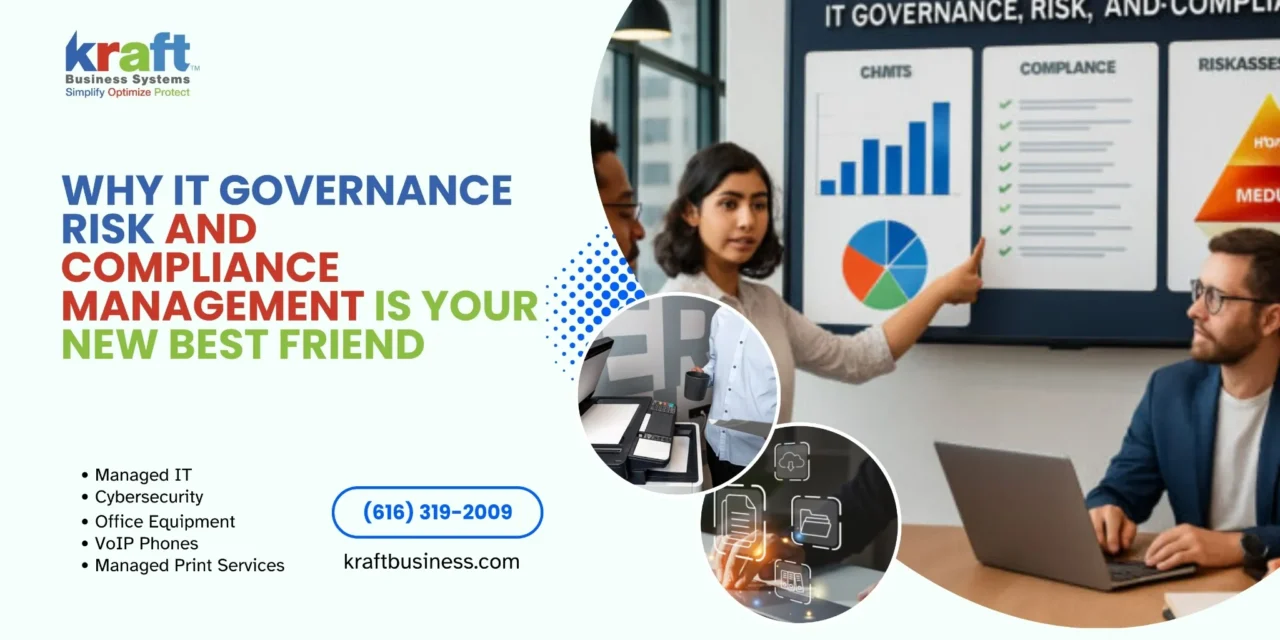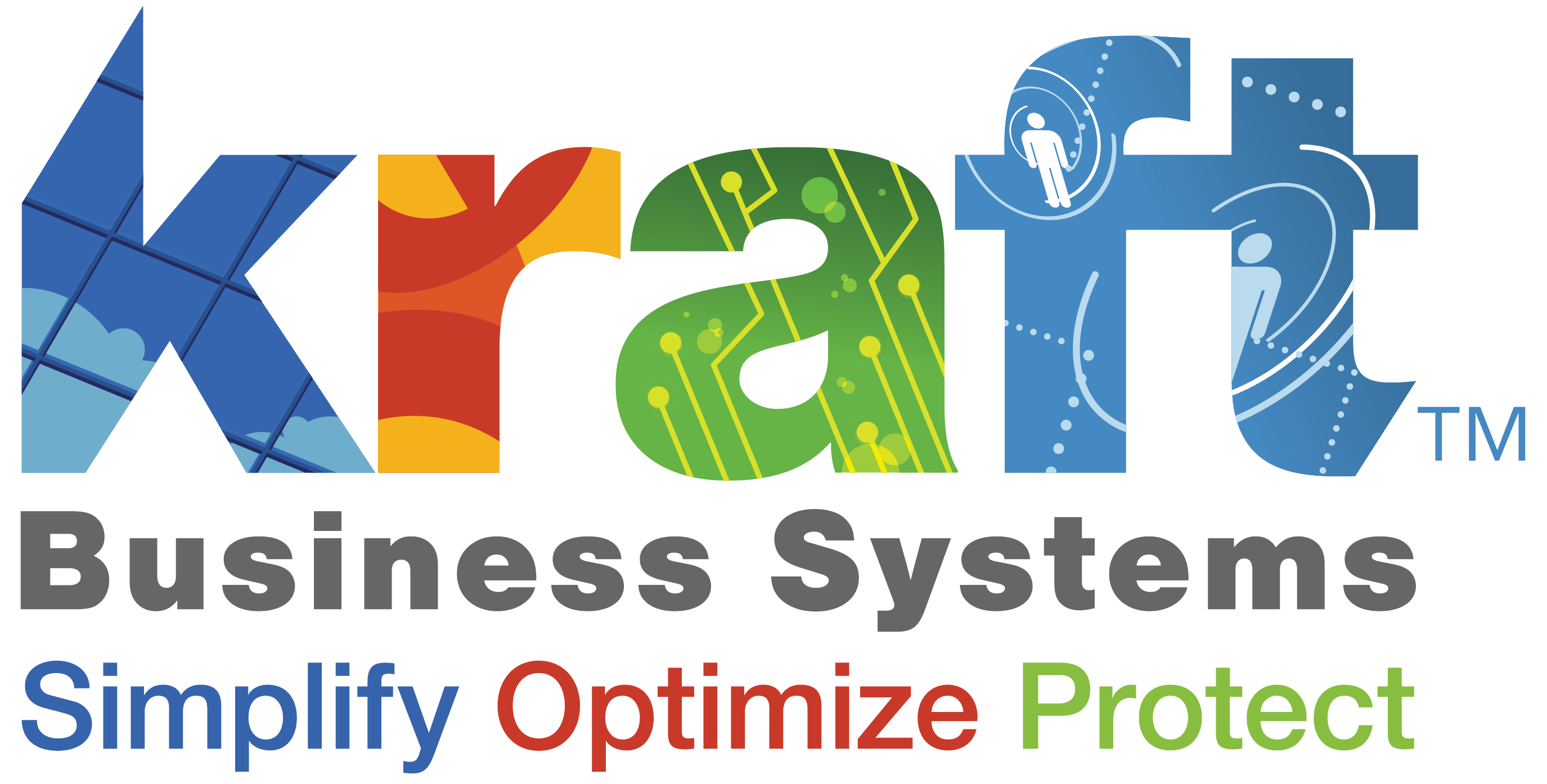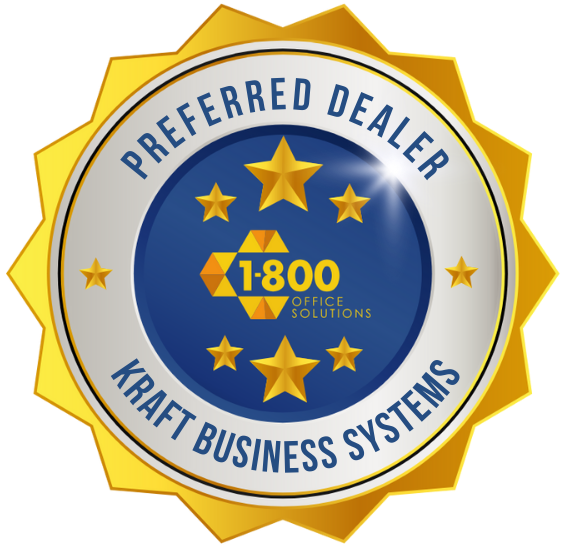IT governance risk and compliance management is a structured approach that aligns IT activities with business goals while effectively managing risks and ensuring regulatory compliance. If you’re looking to understand IT GRC, here’s what you need to know:
| IT GRC Component | Definition | Purpose |
|---|---|---|
| Governance | Framework for decision-making and accountability in IT | Ensures IT investments support business objectives |
| Risk Management | Process of identifying, assessing, and controlling IT threats | Protects organization from financial and operational losses |
| Compliance | Adherence to laws, regulations, and industry standards | Avoids penalties and maintains reputation |
Did you know that firms with above-average IT governance performance achieve more than 20% higher profitability than those with poor governance? As businesses increasingly depend on technology, having a robust IT GRC framework isn’t just a nice-to-have—it’s a competitive necessity.
The stakes are high for effective IT operations. With global IT spending reaching $4.7 trillion in 2023 (and projected to hit $5 trillion in 2024), organizations need structured ways to ensure these investments deliver value while minimizing risks.
For mid-sized businesses, IT GRC offers particular advantages:
- Cost reduction through elimination of duplicated processes
- Improved security with systematic risk identification and mitigation
- Better decision-making with clear visibility into IT operations
- Reduced compliance burden through automated monitoring and reporting
Think of IT GRC not as extra bureaucracy, but as a streamlined approach that helps you manage technology more effectively. It breaks down silos between departments and creates a unified framework for addressing IT challenges.
As one expert notes, “Effective IT governance is the single most important predictor of the value an organization generates from IT.”
It governance risk and compliance management further reading:
What is IT Governance Risk and Compliance Management?
Think of it governance risk and compliance management as the control center for your organization’s technology resources. It’s not just about rules and regulations—it’s about making your technology work smarter for your business while keeping threats at bay.
Governance creates the roadmap for your IT decisions. It answers important questions like who makes technology decisions, how those decisions align with your business goals, and who’s accountable for results. Good governance isn’t restrictive—it’s liberating because it ensures your technology investments actually deliver value instead of becoming expensive distractions.
Risk management is your business’s early warning system. It helps you spot potential problems before they become actual headaches. From ransomware attacks to system crashes to third-party vendor issues, effective risk management helps you prepare for the “what ifs” that keep business owners up at night.
Compliance ensures you’re playing by the rules—whether they’re government regulations like GDPR, industry standards like HIPAA for healthcare, or payment requirements like PCI DSS. Think of compliance as your protection against fines, reputation damage, and legal troubles.
Back in 2007, the Open Compliance and Ethics Group (OCEG) connected these dots by introducing the concept of integrated GRC. They called it “Principled Performance”—a refreshing approach that focuses not just on avoiding problems but on actively creating business value.
Several trusted frameworks can guide your it governance risk and compliance management journey:
- ISO/IEC 38500 provides international standards for technology governance
- COBIT offers a comprehensive roadmap created by ISACA
- NIST Cybersecurity Framework gives practical guidelines for managing security risks
As one OCEG expert puts it, “GRC is overarching. It sets the tone and the strategy.” When done right, IT GRC becomes less about bureaucracy and more about making smarter decisions that protect and grow your business.
Governance, Risk, and Compliance Framework
The Evolution from General GRC to IT-Focused GRC
Remember when technology was just “the IT department’s problem”? Those days are long gone. The shift from general business GRC to specialized it governance risk and compliance management reflects how deeply technology now touches every aspect of modern business.
While traditional GRC covered broad organizational concerns, IT GRC zooms in on the unique challenges that come with our increasingly digital world. This evolution didn’t happen overnight—it’s been driven by several game-changing trends:
Digital change has transformed how we do business. When every department relies on technology for daily operations, IT governance becomes inseparable from business governance.
Cloud adoption has moved critical systems outside your physical walls. This shift raises important questions about data location, shared responsibilities, and managing risks from third-party providers.
Cybersecurity threats have become more sophisticated and relentless. The expanding threat landscape demands specialized approaches focused specifically on protecting technology systems.
Regulatory requirements targeting technology and data continue to multiply. From GDPR to CCPA and beyond, these regulations need specialized compliance capabilities to steer successfully.
DevSecOps practices have woven security and compliance directly into development processes. This integration requires governance structures that maintain control while allowing for rapid innovation.
The result? IT GRC has emerged as its own discipline with specialized frameworks, tools, and best practices. Forward-thinking organizations no longer treat IT as just another department to govern—they recognize that technology governance deserves focused attention.
As one IT governance expert notes, “Without a seamless integration, GRC implementation is likely to be fragmented and ineffective.” A unified approach helps you manage technology risks and compliance requirements while ensuring your IT investments deliver real business value.
How Governance, Risk & Compliance Interrelate
While you could tackle governance, risk management, and compliance separately, they work best as a team. Think of them as three musicians who sound good solo but create beautiful harmony when playing together. Here’s how these components strengthen each other:
Policies flow from governance to guide everything else. Your governance structures establish the big picture—your strategic direction, priorities, and how much risk you’re willing to accept. These high-level decisions shape the policies that guide your risk management and compliance activities. For example, when your leadership team decides on acceptable risk levels, your security team can better prioritize which vulnerabilities to address first.
Risk assessments inform better decisions. Your risk management processes spotlight threats that could derail your business objectives. These insights help your leadership make smarter decisions about where to invest resources. They also highlight areas where your compliance controls might need strengthening.
Compliance controls double as risk shields. Many compliance requirements exist specifically to address common risks. When properly implemented, compliance measures like access management, change control, and data protection serve as effective safeguards against threats.
Continuous monitoring connects all three areas. Ongoing assessment provides feedback that helps refine governance decisions, update risk assessments, and verify compliance status. This creates a virtuous cycle of improvement across your entire it governance risk and compliance management program.
As one GRC expert puts it, “GRC is more important than ever in the 2020s as business complexity and regulatory demands grow.” An integrated approach helps you steer this complexity by ensuring that:
- Your governance decisions are informed by risk realities and compliance requirements
- Your risk management efforts align with strategic priorities
- Your compliance activities focus on meaningful risks rather than just checking boxes
The result? A more efficient approach to managing IT that eliminates redundant efforts and closes dangerous gaps that might otherwise exist between separate functions.
Why It Matters: Benefits & ROI of Integrated IT GRC
Implementing an integrated IT governance risk and compliance management program isn’t just about checking boxes—it delivers real, tangible benefits that boost your bottom line, streamline operations, and strengthen your security posture. Let’s explore what your business stands to gain:
Profitability, Efficiency and Security Gains
Would an extra 20% profitability get your attention? That’s exactly what research shows organizations with strong IT governance achieve compared to those with poor governance. This impressive profit boost comes from several sources.
Higher profitability emerges when you direct IT resources toward truly value-creating initiatives. You’ll eliminate waste from redundant systems, reduce costs from security incidents, and better align your technology investments with what your business actually needs.
Cost reduction happens naturally as you optimize processes. Companies using effective GRC eliminate duplicate efforts across departments and can reduce manual compliance work by up to 90% through smart automation. One financial institution we studied eliminated 950 redundant software packages through governance reviews—imagine those savings!
Fewer security incidents mean less downtime and fewer emergency responses. When you proactively identify and address vulnerabilities, you’ll experience fewer breaches and operational disruptions. This protects both your wallet and your reputation.
Faster, less painful audits might be the benefit most appreciated by your team. Organizations with mature IT governance risk and compliance management programs spend 50% less time responding to audits. Why? Because they have documentation ready, evidence collection automated, and consistent control processes in place.
A health insurance company we worked with standardized their audit responses and cut their effort in half—all while meeting new regulatory requirements. That’s the power of doing GRC right.
Here’s how manual and automated GRC approaches stack up:
| Aspect | Manual GRC | Automated GRC | Improvement |
|---|---|---|---|
| Audit preparation time | 4-6 weeks | 1-2 weeks | 60-75% reduction |
| Control testing | Monthly manual sampling | Continuous automated monitoring | 90% effort reduction |
| Risk assessment | Quarterly static assessments | Real-time risk indicators | Faster response to emerging threats |
| Policy management | Siloed document repositories | Centralized, linked policy system | Improved consistency and coverage |
| Compliance reporting | Manual data collection and analysis | Automated dashboards and alerts | Increased accuracy and timeliness |
Strategic Alignment & Data-Driven Decisions
Beyond the dollars and cents, IT governance risk and compliance management creates strategic advantages that might be harder to quantify but are equally valuable.
Board oversight and strategic alignment improve dramatically with structured IT governance. Your board gains clear visibility into technology risks and opportunities, leading to better-informed strategic decisions. As one governance expert puts it, “IT governance allows for long-term strategic flexibility.”
Investment optimization happens naturally when your governance processes prioritize IT initiatives based on business goals and risk considerations. Instead of spreading resources thinly across too many projects, you’ll direct them to your highest-value opportunities.
Transparent metrics and KPIs enable smarter decision-making throughout your organization. When you measure IT performance against meaningful business outcomes, your leadership team can make more informed choices about technology investments.
Stakeholder trust grows when you demonstrate effective control over your IT environment. This trust extends to everyone who matters—customers, partners, regulators, and investors all value transparency and responsible management.
One CIO summed it up perfectly: “I view GRC as something strategic because when it functions properly, it protects the organization while enabling innovation.” That balance between protection and enablement is the true strategic value of IT governance risk and compliance management.
Building & Automating Your IT GRC Program
Creating an effective IT governance risk and compliance management program doesn’t have to be overwhelming. Think of it as building a house – you need a solid foundation, the right tools, and a clear blueprint. Here’s how to construct your IT GRC program in a way that works for your business:
Assessing Your Current it governance risk and compliance management Maturity
Before jumping into new practices, let’s figure out where you stand. Think of a maturity assessment as your GPS – it shows your current location before plotting the route forward.
Gap analysis helps you see the difference between where you are and where you need to be. We look at several key areas when working with Michigan businesses:
Your governance structures – are decisions being made by the right people? Your risk management capabilities – can you spot trouble before it arrives? Your compliance monitoring – are you consistently meeting requirements? Your policy management – does everyone know the rules? Your technology enablement – are you using the right tools? And perhaps most importantly, your culture – does everyone understand why this matters?
Most organizations fall somewhere on this five-stage journey:
- Initial/Ad hoc: You’re putting out fires as they happen
- Developing: You have some processes, but they’re not consistent
- Defined: You’ve documented how things should work
- Managed: You’re measuring and controlling those processes
- Optimized: You’re constantly improving and refining
Don’t worry if you’re not at stage five – only about half of organizations consider their programs mature, while 20% are just getting started. Knowing where you stand helps set realistic goals.
Here in Grand Rapids, our Kraft Business Systems team helps Michigan organizations understand their starting point using proven frameworks custom to your specific industry needs.
Implementing Tools & Controls for IT Governance Risk and Compliance Management
Once you know where you stand, it’s time to choose the right tools for the job. Think of these as the modern equivalent of a Swiss Army knife – each tool serves a specific purpose in your IT GRC toolkit.
Security Information and Event Management (SIEM) tools work like a security camera system for your network. They watch for suspicious activity in real-time, collecting and analyzing alerts so you can spot potential issues before they become major problems.
Compliance automation tools are like having an extra team member who never sleeps. They gather evidence, test controls, and generate reports automatically – reducing manual compliance work by up to 90%. This frees your team to focus on actual risks rather than paperwork.
Risk registers help you track and prioritize potential threats. These tools bring structure to risk management, helping you decide which issues need immediate attention and which can wait.
Policy management systems keep your rulebook current and accessible. No more hunting through email or shared drives for the latest version of a policy – everyone always has access to the most up-to-date information.
Internal controls are your digital guardrails. These technical and procedural safeguards protect your information assets and ensure compliance. The best controls map directly to specific risks and requirements.
Automation workflows connect everything into a seamless process. For example, when someone requests a system change, it automatically triggers a risk check, policy review, and compliance verification before approval.
When choosing your tools, consider:
- Will they play nicely with your existing systems?
- Can they grow as your business grows?
- Can they be customized to fit your specific needs?
- Do they provide reports that actually help you make decisions?
- Will your team find them easy to use?
At Kraft Business Systems, we’ve helped organizations throughout Michigan select and implement the right tools for their specific needs. Our Grand Rapids team understands that one size doesn’t fit all when it comes to IT GRC.
Governance, Risk, and Compliance Platforms
GRC: Governance, Risk, and Compliance Tools
GRC Integrated Risk Management
Frequently Asked Questions about IT GRC
We’ve helped countless Michigan businesses implement it governance risk and compliance management programs, and certain questions come up time and again. Let’s address the most common concerns we hear from our clients:
What frameworks should I start with?
Choosing the right framework doesn’t have to be overwhelming. Based on our experience with businesses across Michigan, we recommend these proven starting points:
ISO 27001 works wonderfully for organizations primarily concerned with information security. Think of it as building a solid foundation for your information security house, with room to expand into broader governance later.
NIST Cybersecurity Framework offers a flexible approach that scales nicely for organizations of all sizes. Its straightforward five-function model (Identify, Protect, Detect, Respond, Recover) makes intuitive sense even if you’re new to formal cybersecurity governance.
COBIT provides a more comprehensive view across all IT governance domains. It’s particularly valuable when you need to create clear connections between your IT activities and broader business objectives.
For smaller businesses, we often suggest starting with a streamlined version of these frameworks. Focus on the controls that address your most significant risks first, then expand as your program matures.
These frameworks are meant to be guidelines, not rigid rulebooks. As one of our clients put it, “The framework should bend to fit your business, not the other way around.”
How does GRC automation reduce risk and cost?
The benefits of automation are both immediate and long-lasting:
Real-time monitoring and alerts change the game completely. Instead of finding problems weeks or months after they occur during manual reviews, automated systems flag issues as they happen. One of our manufacturing clients caught a potential data leak within minutes rather than during their quarterly audit—preventing what could have been a costly breach.
Automated evidence collection transforms the audit experience. Rather than the traditional “audit panic” where teams scramble to gather documentation, systems continuously collect and organize control evidence. One healthcare client reduced their audit preparation time from six weeks to just three days.
Workflow automation ensures consistency in your governance processes. When a system change request comes in, automated workflows can ensure it gets proper risk assessment and approval before implementation—no cutting corners or forgotten steps.
Centralized documentation means no more hunting through email threads or shared drives for the latest policy version. Everyone accesses the same, current information, reducing confusion and compliance gaps.
Data analytics provide insights that simply aren’t possible with manual processes. Patterns emerge across thousands of data points that might indicate emerging risks or control weaknesses before they become problems.
Together, these capabilities typically reduce manual GRC effort by up to 90% while actually improving risk visibility. That translates to real savings in both time and money.
Who owns IT GRC inside an organization?
Effective it governance risk and compliance management requires shared responsibility across multiple levels:
The board of directors holds ultimate accountability for governance. They set the organization’s risk appetite and ensure appropriate controls exist. Some boards create dedicated IT or risk committees to provide focused oversight.
C-suite executives each play crucial roles in the GRC ecosystem:
- The CEO ensures alignment between business strategy and IT governance
- The CIO oversees IT operations and governance processes
- The CISO focuses on security aspects of IT risk and compliance
- The CRO integrates IT risks into the enterprise risk framework
- The CCO ensures regulatory requirements are met
Cross-functional teams typically handle day-to-day GRC activities. These often include representatives from IT, security, risk management, compliance, legal, and various business units.
Clear roles and responsibilities prevent important tasks from falling through the cracks. As one of our financial services clients noted, “Once we clearly defined who was responsible for what, our entire GRC program became more effective overnight.”
At Kraft Business Systems, we help organizations throughout Michigan design governance structures custom to their specific needs. Whether you’re a growing business in Grand Rapids or an established company elsewhere in the state, we’ll help you establish effective oversight without unnecessary bureaucracy.
Conclusion
IT governance risk and compliance management isn’t just another corporate buzzword—it’s become the backbone of successful modern businesses. Throughout this guide, we’ve seen how a thoughtful IT GRC approach delivers real benefits that impact your bottom line: boosted profitability, streamlined costs, smarter risk management, and compliance that doesn’t keep you up at night.
Let’s be clear about something important: effective IT GRC isn’t about creating more paperwork or ticking boxes on a checklist. It’s about making your technology investments work harder for your business goals, handling risks before they become problems, and meeting compliance requirements without the usual headaches.
Think of IT GRC as your business’s future-proofing strategy. As technology evolves and regulations shift (which they always do), a mature GRC program gives you the flexibility to adapt quickly and confidently to whatever comes next.
Here at Kraft Business Systems, we understand the unique challenges Michigan businesses face. Our team in Grand Rapids works with organizations across our great state—from Detroit to Traverse City, from Ann Arbor to Flint—creating IT GRC programs custom to your specific needs and industry requirements.
We firmly believe that solid IT governance shouldn’t be reserved only for giant corporations with endless resources. Whether you’re a growing small business taking your first steps toward formal IT governance or a larger enterprise looking to fine-tune your existing program, we bring the expertise and support you need without unnecessary complexity.
Building IT GRC maturity is more marathon than sprint. Each improvement you make to your governance structures, risk management processes, or compliance capabilities builds on previous efforts, gradually creating a more resilient, efficient organization that can weather any storm.
Ready to make IT governance risk and compliance management work for you rather than against you? Our team at Kraft Business Systems is just a conversation away. Let’s discuss how we can help you build or improve your IT GRC program in ways that make sense for your business and budget.











